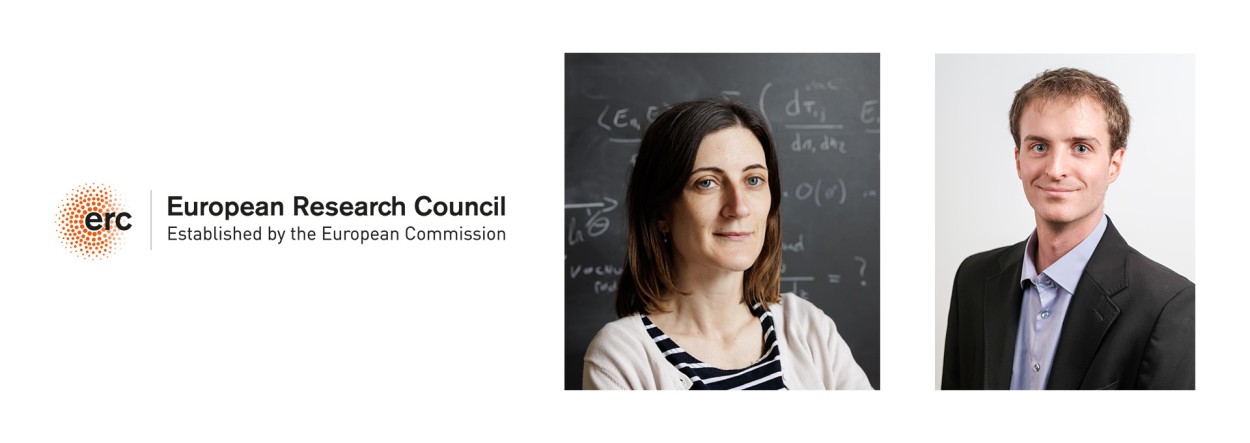Two ERC Starting fellowships in theoretical physics and economics

QGPthroughEEC: Understanding the quark gluon plasma
Among the many elementary particles, quarks and gluons are found today inside protons and neutrons, which themselves make up the nuclei of atoms. But at the very beginning of the Universe, quarks and gluons formed a very special state of matter known as quark-gluon plasma. In particle accerelators, high-energy collisions of heavy ions (lead or gold atoms stripped of their electrons) are able to recreate this early plasma. But many questions remain. The aim of the QGPthroughEEC** project led by Carlota Andres is to develop new tools capable of probing the plasma of quarks and gluons at different scales, like a microscope. As the plasma's lifetime is extremely short, it is impossible to use an external probe for this purpose. But heavy-ion collisions can also produce jets of particles that pass through the plasma and interact with it. Detecting these jets provides clues to the behavior of quarks and gluons. To disentangle the useful information from the rest, however, it is necessary to measure the relevant quantities. During her post-doctorate at the Centre for Theoretical Physics (CPTH*), Carlota Andres proposed the use of new observables, “energy-energy correlators”, which promise to provide unprecedented information. With this ERC-funded project, her aim is now to further develop the theoretical formalism to calculate these quantities and enable comparisons with data from experiments.
*CPHT: a joint research unit CNRS, École Polytechnique, Institut Polytechnique de Paris, 91120 Palaiseau, France
** QGPthroughEEC: Quark Gluon Plasma through Energy-Energy Correlators
MADPART: Investigating assignment markets
What if economic research were to provide a fresh perspective on the allocation of social housing, daycare places, kidney transplants or the assignment of teachers in state schools? Julien Combe, a specialist in market design and professor at Ecole Polytechnique, takes up the challenge. This member of the Center for Research in Economics and Statistics (CREST*) has just been awarded an ERC Starting Grants of €1.5 million over 5 years for his MADPART** project, which focuses on the study of assignment markets. These markets are unique in that they have neither prices nor financial transactions, and allocations are made via algorithms and priority criteria. However, players in these markets often have to decide whether or not to participate, as several options are available to them. When it comes to allocating places in public crèches, for example, families are faced with a range of different childcare options (nannies, relatives, etc.). The rules of priority established by municipalities modify parents' perception of their chances of being accommodated, prompting them to turn to other solutions. With MADPART, Julien Combe will study how these external options impact allocation procedures and public policy objectives. He will analyze unique, hitherto unexplored databases (teachers, crèches, social housing, kidney allocation). Using statistical tools, advanced theoretical models and state-of-the-art empirical methods, new models of allocation markets will be established. MADPART will then provide innovations in the four areas studied and recommendations for new public policies for these markets.
*CREST : a joint research unit CNRS, École Polytechnique, GENES, ENSAE Paris, Institut Polytechnique de Paris, 91120 Palaiseau, France
**Market Design and Participation: Comprehensive Design for Matching Markets
 Support l'X
Support l'X